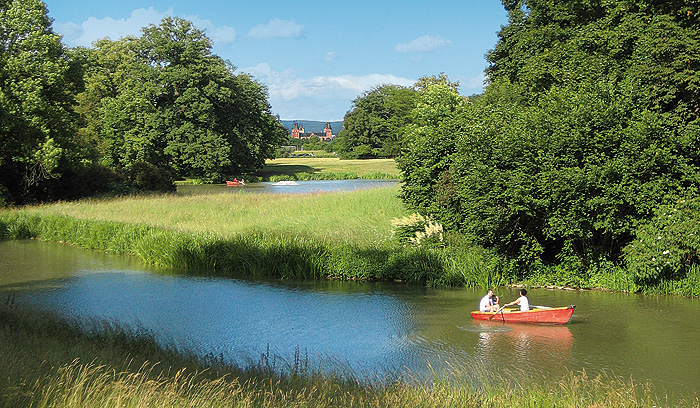Main information:
Schönbusch
History

Schönbusch Park is one of the earliest landscape gardens in South Germany. Originating as the electoral game park, it was transformed at the instigation of the Archbishop and Elector of Mainz, Friedrich Karl von Erthal, under the direction of minister of state Graf Wilhelm von Sickingen and the architect Emanuel d'Herigoyen. From 1775, artificial lakes and water courses and hills were created and a winding belt walk was laid out.
By 1788/79, in addition to Schönbusch Palace, picturesque rural features in the form of the farm building, the shepherds' cottages and the little village had been created as well as the Temple of Friendship, the Philosophers' House, the observation tower, the dining hall and the Red Bridge.
Friedrich Ludwig von Sckell was brought in at the latest from 1783 to complete the garden. It was his first opportunity to apply to a new park the principles of landscape garden design that he had learned in England. In the process he created one of the most important landscape gardens in Germany.

Recommendation in the social media
Facebook Twitter Google Plus